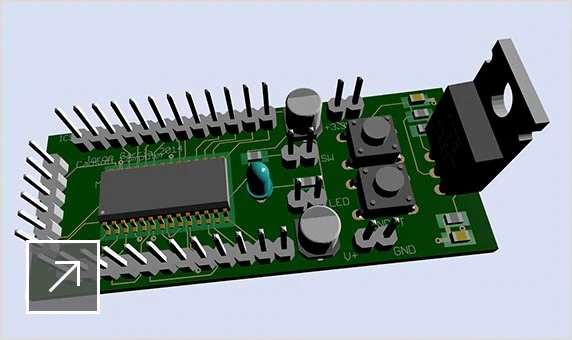When it comes to home improvement and maintenance, understanding the different types of household wiring is essential for every homeowner. Whether you're planning a renovation, troubleshooting electrical issues, or simply curious about how your home's electrical system works, having a solid grasp of wiring types can make all the difference. In this complete guide, we'll explore the various wiring options available, their unique characteristics, and the best applications for each. By the end of this post, you'll be equipped with the knowledge to make informed decisions about your home's electrical needs, ensuring safety and efficiency for years to come.
Types Of Gate Hinges: A Complete Guide For Homeowners
When it comes to selecting the right gate hinges for your home, understanding the various types available is essential for both functionality and aesthetics. There are several common types of gate hinges, including butt hinges, strap hinges, and continuous hinges, each offering unique benefits. Butt hinges are typically used for lighter gates and provide a clean, minimal look, while strap hinges are ideal for heavier gates, offering added strength and a decorative element. Continuous hinges, also known as piano hinges, run the entire length of the gate, distributing weight evenly and enhancing durability. Additionally, there are specialized hinges like self-closing and spring-loaded hinges that offer convenience and security. By choosing the right type of hinge, homeowners can ensure their gates operate smoothly and enhance the overall appeal of their property.
 www.tdchinges.com
www.tdchinges.com Select All The Basic Methods Of Wiring Electrical Circuits.
When it comes to household wiring, understanding the basic methods of wiring electrical circuits is essential for any homeowner. The most common methods include series wiring, where components are connected end-to-end, ensuring that the current flows through each device in a single path; parallel wiring, which allows multiple devices to operate independently on the same circuit, providing greater flexibility and reliability; and branch circuit wiring, which divides the electrical load among different circuits, preventing overload and enhancing safety. Additionally, there are specialized techniques such as three-way and four-way switch wiring for controlling lights from multiple locations, and dedicated circuits for high-demand appliances. Familiarizing yourself with these methods not only aids in better home maintenance but also empowers you to make informed decisions when it comes to upgrades or repairs.
 faoinarb4vlibguide.z13.web.core.windows.net
faoinarb4vlibguide.z13.web.core.windows.net Residential Electrical Wiring Basics
When it comes to residential electrical wiring, understanding the basics is essential for homeowners looking to maintain or upgrade their electrical systems safely and efficiently. At the core of residential wiring are three main types of conductors: non-metallic sheathed cable (often referred to as Romex), armored cable, and conduit systems. Each type has its specific applications, advantages, and installation requirements. Non-metallic sheathed cable is commonly used for interior wiring due to its flexibility and ease of installation, while armored cable provides additional protection in areas prone to physical damage. Conduit systems, on the other hand, are ideal for outdoor or exposed installations, offering robust protection against environmental factors. Familiarizing yourself with these wiring types not only helps ensure your home is safe and up to code but also empowers you to make informed decisions for any future electrical projects.
 enginelibfibromas.z21.web.core.windows.net
enginelibfibromas.z21.web.core.windows.net Types Of Home Electric Wiring
When it comes to household wiring, understanding the different types is essential for any homeowner. The most common types of electrical wiring include Non-Metallic Sheathed Cable (NM), often referred to as Romex, which is widely used for interior wiring due to its flexibility and ease of installation. Then there's the Armored Cable (AC), which provides extra protection against physical damage, making it ideal for areas where wiring might be exposed to potential hazards. Additionally, there's the conduit wiring, which involves running wires through metal or plastic tubes, offering robust protection in commercial settings or outdoor installations. Lastly, we have the older knob-and-tube wiring, which is less common today but still found in many older homes. Each type has its unique applications, advantages, and safety considerations, making it crucial for homeowners to choose the right wiring for their specific needs.
 schematicsgiweraumr.z14.web.core.windows.net
schematicsgiweraumr.z14.web.core.windows.net Wiring Diagrams For Home Use
Wiring diagrams for home use are essential tools that help homeowners understand the intricate network of electrical systems within their residences. These diagrams provide a visual representation of how electrical circuits are structured, showcasing the connections between various components like outlets, switches, and fixtures. By familiarizing themselves with wiring diagrams, homeowners can troubleshoot issues, plan renovations, or even undertake DIY projects with greater confidence. Whether you're dealing with a simple lighting setup or a more complex home automation system, having access to accurate wiring diagrams can make a significant difference in ensuring safety and efficiency in your home's electrical system.
 wiringfixfredericdupin85.z21.web.core.windows.net
wiringfixfredericdupin85.z21.web.core.windows.net Other Wiring Gallery

www.docelectricalservices.com
Light Bulb Types: The Homeowners Guide To By Doc Electric

mechanicdballiance.z1.web.core.windows.net
Types Of Old House Wiring

circuitlistdonjons.z13.web.core.windows.net
Home Wiring Material

www.slideshare.net
Household Wiring

schematicsgiweraumr.z14.web.core.windows.net
Types Of Home Electric Wiring

www.diagramboard.com
House Light Wiring Colors

www.caretxdigital.com
Types Of Wiring System In Building

enginelibfibromas.z21.web.core.windows.net
You Might Also Like: Raspberry Pi Gpio Wiring Diagram
Residential Electrical Wiring Basics
